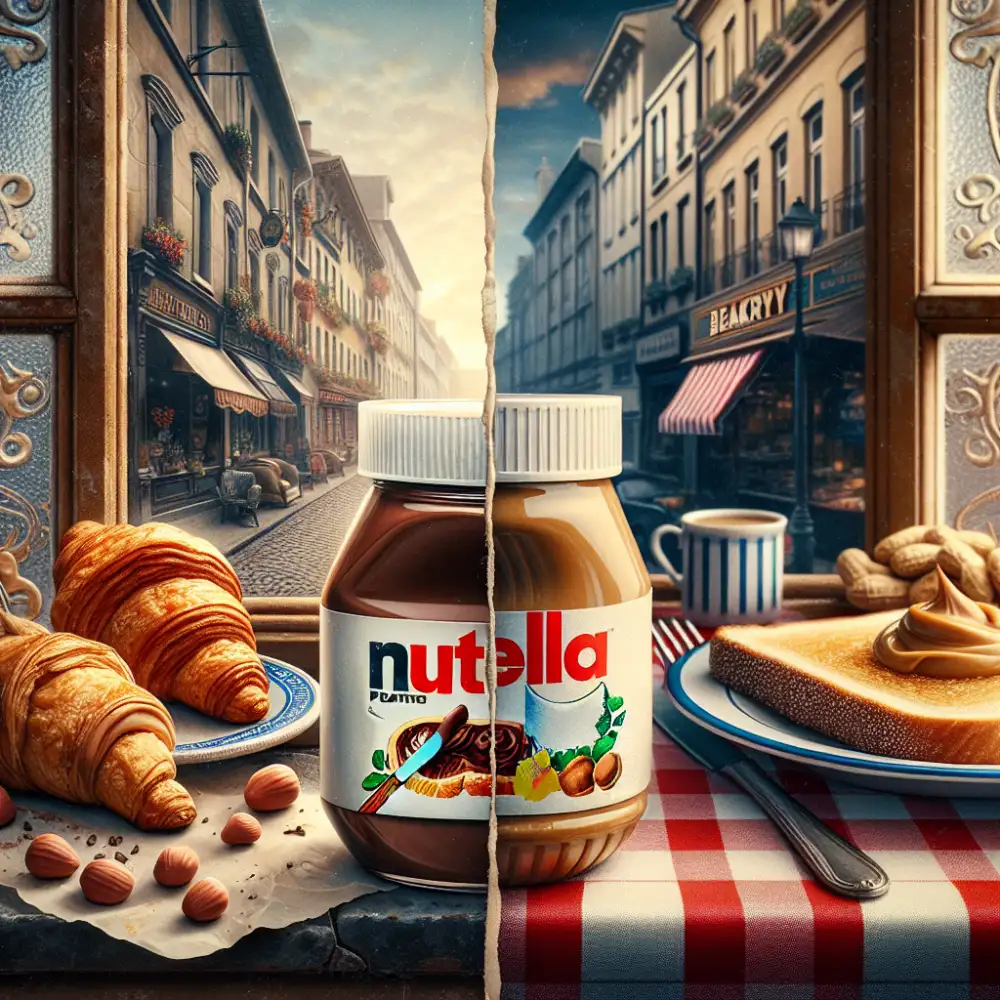Nutella vs Peanut Butter: A Delicious Showdown of Sweet vs Savory Spreads

- Nutella: Origin, Ingredients, and Flavor Profile
- Peanut Butter: Origins, Ingredients, and Flavor Profile
- Nutritional Comparison: Calories, Fat Content, Sugar Levels
- Health Benefits: Protein, Vitamins, Minerals
- Culinary Uses: Spreads, Baking, Cooking
- Allergies and Dietary Restrictions
- Sustainability and Environmental Impact
In the world of spreads, two popular contenders stand out: Nutella and Peanut Butter. These beloved pantry staples offer a delightful contrast in flavors - Nutella with its rich, chocolatey sweetness, and Peanut Butter with its creamy, nutty savoriness. As versatile additions to breakfasts, snacks, and desserts, both spreads have garnered a loyal following among food enthusiasts. Join us on a delectable journey as we explore the origins, ingredients, nutritional aspects, culinary uses, and more of these iconic spreads in this delicious showdown of sweet versus savory.
Nutella: Origin, Ingredients, and Flavor Profile
Nutella, the beloved hazelnut spread, originated in Italy in the 1940s. Created by Pietro Ferrero during World War II when cocoa was scarce, Nutella is made from roasted hazelnuts, cocoa powder, sugar, palm oil, and skim milk. Its creamy texture and rich chocolate-hazelnut flavor profile have made it a staple in breakfast spreads and desserts worldwide. The combination of sweet and nutty flavors makes Nutella a versatile ingredient in various culinary creations.
Peanut Butter: Origins, Ingredients, and Flavor Profile
Peanut butter, a popular spread enjoyed worldwide, has its origins dating back to the Aztecs and Incas who ground roasted peanuts into a paste. In the United States, Dr. John Harvey Kellogg patented a process for creating peanut butter in the late 19th century. The simple yet delicious spread is made from dry roasted peanuts that are ground until smooth, with some varieties containing added salt, sugar, or oil for flavor. Peanut butter offers a rich and nutty taste with a creamy texture that appeals to both kids and adults alike.
Nutritional Comparison: Calories, Fat Content, Sugar Levels
When it comes to nutritional comparison, Nutella and peanut butter have distinct differences. Nutella is higher in calories and sugar due to its chocolate and hazelnut content, with around 100 calories per tablespoon and 11 grams of sugar. On the other hand, peanut butter contains more fat but less sugar, with approximately 90 calories per tablespoon and only 3 grams of sugar. Peanut butter also provides more protein than Nutella, making it a better option for those looking to increase their protein intake while keeping sugar levels in check.
| Feature | Nutella | Peanut Butter (Smooth) |
|---|---|---|
| Primary Ingredient | Sugar | Peanuts |
| Taste | Chocolate-Hazelnut | Savory, Nutty |
| Texture | Smooth | Smooth (can be crunchy) |
| Calories (per 2 tbsp) | 200 | 190 |
| Protein (per 2 tbsp) | 2g | 8g |
| Fat (per 2 tbsp) | 12g | 16g |
| Common Uses | Spread, Dessert | Spread, Sandwiches, Sauces |
Health Benefits: Protein, Vitamins, Minerals
When it comes to health benefits, both Nutella and peanut butter offer some nutritional value. Peanut butter is a good source of protein, providing around 7-8 grams per serving. It also contains essential vitamins like Vitamin E and B vitamins, as well as minerals such as magnesium and potassium. On the other hand, Nutella contains hazelnuts which are rich in healthy fats, fiber, Vitamin E, and antioxidants. However, Nutella is higher in sugar compared to natural peanut butter, so moderation is key when considering the health benefits of these spreads.

Culinary Uses: Spreads, Baking, Cooking
Nutella and peanut butter are versatile spreads that can be used in a variety of culinary creations. Nutella is perfect for spreading on toast, pancakes, or waffles for a sweet breakfast treat. It can also be swirled into yogurt or oatmeal for added flavor. In baking, Nutella can be used to make cookies, brownies, and cakes for a rich and indulgent dessert.
On the other hand, peanut butter is a staple in many households for making classic PB&J sandwiches. It can also be used in baking to make peanut butter cookies or as an ingredient in savory dishes like Thai peanut noodles or satay sauce. Additionally, both spreads can be incorporated into smoothies or used as a dip for fruits and vegetables for a nutritious snack option.
Allergies and Dietary Restrictions
For individuals with nut allergies, Nutella can pose a significant risk as it contains hazelnuts. Peanut Butter, on the other hand, is a common allergen for those with peanut allergies.
It's important for individuals with allergies to carefully read labels and choose spreads that are safe for consumption. For those following specific dietary restrictions such as vegan or gluten-free diets, there are variations of both Nutella and Peanut Butter available in the market to cater to these needs. Always check product labels to ensure they align with your dietary requirements.
Sustainability and Environmental Impact
When it comes to sustainability, peanut butter generally has a lower environmental impact compared to Nutella. Peanut butter production requires less water and land resources than chocolate production for Nutella. Additionally, peanuts are often grown in rotation with other crops, which helps improve soil health and reduce the need for chemical fertilizers.

On the other hand, Nutella contains palm oil, which has been linked to deforestation in regions where it is cultivated. Sustainable palm oil certification schemes exist, but not all brands use certified palm oil. Choosing peanut butter over Nutella can be a more environmentally friendly choice due to these factors.
Consumers concerned about the environmental impact of their food choices may want to consider opting for peanut butter as a more sustainable spread option.
In the battle of Nutella vs Peanut Butter, both spreads offer unique flavors and versatility in culinary creations. Nutella appeals to those with a sweet tooth, boasting a rich chocolate-hazelnut taste. On the other hand, Peanut Butter provides a savory option with its creamy texture and nutty flavor. When it comes to nutritional value, Peanut Butter tends to be higher in protein and lower in sugar compared to Nutella. Ultimately, the choice between Nutella and Peanut Butter comes down to personal preference and dietary needs. Whether you prefer the sweetness of Nutella or the savory richness of Peanut Butter, both spreads have their own delicious merits.
Published: 08. 04. 2024
Category: Food



